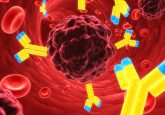3. LC–MS approaches for the bioanalysis of biologics

As part of our Ask the Experts feature, we find out the range of different LC–MS approaches and techniques the experts have used for the bioanalysis of biologics.
Can you describe what LC–MS-based approaches you have used/are using for the bioanalysis of biologics and why?
Chad Christianson (Alturas Analytics)
The bioanalysis of biologics requires the ability to use many different approaches. What type of biologic needs to be analyzed? What is the matrix, species and expected concentration in the samples? The answers to these questions drives the approach for the bioanalysis. Currently the most sensitive method – and what we use at Alturas Analytics – to analyze biologics is protein digestion and analysis of the subsequent peptides by LC–MS/MS. The sample preparation of the biologic is a crucial step and varies with each biologic and program. The project might require a simple pellet digestion, a very complex immunocapture method or something in between. The method developed must be accurate, precise and selective.
Matthew Ewles (Covance)
My primary focus has been on utilizing LC–MS/MS instrumentation (UHPLC with triple-quadrupole MS/MS detection). When I started at Covance, high resolution instruments were seldom used in bioanalysis. My focus has been on establishing workflows for peptides and oligonucleotides to be analyzed intact, as well as immunoaffinity and tryptic digestion/signature peptide workflows for proteins. The focus is always on ensuring these techniques are robust, automated, high throughput and can be validated to regulatory standards. Globally, we are now also using high resolution mass spectrometry for bioanalysis of some biologics, particularly oligonucleotides and intact proteins.
Wenying Jian (Janssen Research & Development)
There are typically two approaches for LC–MS-based bioanalysis of biologics: bottom-up and top-down. Bottom-up approach is a relatively well-established and widely adopted workflow that has been routinely conducted in many bioanalytical labs. In a bottom-up assay, the biologics are digested by a proteolytic enzyme, typically trypsin, into peptides which are detected on a triple quadrupole (or high-resolution mass spectrometer) as surrogates of the protein. Top-down, also known as intact analysis, is a relatively new development in the bioanalysis of biologics but has gained significance in recent years because of its ability to provide complementary information to other approaches. In the top-down workflow, the biologics are directly subjected to LC–MS analysis on a high-resolution mass spectrometer for the detection of the whole molecule. It is not a completely new concept and in fact has been extensively used for the characterization of biologic products during manufacturing. However, its application in bioanalysis had been limited due to the requirement to detect very low amounts of analyte protein in the presence of complex biological matrices. Recent advancement in sample preparation techniques and mass spectrometry has made it possible to conduct intact protein analysis in biological samples. Our lab is one of the many that explored this approach and gained appreciation on its value in understanding ADME properties of biologics and in designing and developing novel biologics.
The choice of assay often depends on the type of analyte, the required assay sensitivity and most importantly the questions to be answered. If we are dealing with a structurally stable biologic, such as a monoclonal antibody, a bottom-up assay can provide the benefit of high sensitivity and superior selectivity afforded by detection at peptide level by LC–MS. On the other hand, complex biologics for example a peptide-Fc fusion protein, are often subjected to biotransformations such as proteolytic degradation and therefore it is helpful to use intact analysis to reveal the changes/modifications to the molecule. In addition, in the cases when no suitable surrogate peptide from the relevant region (e.g., active site) is available for a bottom-up assay due to unique sequence or structure, intact analysis is an alternative choice of assay. Very often, our lab combines both approaches to achieve sensitive quantitation of different parts of the molecule while gaining a full understanding of the biotransformation of the biologics.
Carsten Krantz (Novartis)
We started with the quantitation of monoclonal antibodies on triple quadrupole mass spectrometers for pre-clinical species using framework specific surrogate peptides. Usually these were total digest in plasma or serum. The initiative to use LC–MS/MS instead of ligand binding assays came often through the absence of tools for ligand binding assays and the favorable application of mass spectrometry for very detailed questions e.g. differentiation from endogenous proteins by single amino acid replacements. Additionally, we applied mass spectrometry to understand in vivo stability of non-natural protein constructs to verify their structural integrity. Later, we introduced pellet digestion and to gain sensitivity combined capture reagents with LC–MS/MS detection. Here either generic anti-human antibodies or, in special cases, the target was used as a bait coupled to magnetic beads and the proteins of interest were immunoprecipitated, digested on the beads and quantified using specific peptides [1]. As programs progressed we also started to implement these methods in clinical applications and quantified protein therapeutics either by their unique surrogate peptides in the complementary determining regions for anti-body derived modalities, or through particular peptides that could be distinguished from endogenous antibody derived peptides (e.g., peptides spanning regions where the antibody effector functions were silenced) [2]. In the case of protein therapeutics, we could make use of LC–MS/MS to understand the kinetics of differential cleaved therapeutic proteins. Depending on the requirements for sensitivity we applied whole digests, hybrid LC–MS/MS or 2D-LC–MS/MS approaches using specific antibodies in particular for pharmacokinetic applications [3]. Usually quantitation was performed using unit resolution with low-resolution triple quadrupole instruments and in rare cases; we used also high-resolution instruments especially if we had strong influences by the matrix.
References[1] Krantz C, Law WS, Genin JC et al. Use of generic LC-MS/MS assays to characterize atypical PK profile of a biotherapeutic monoclonal antibody. Bioanalysis. 6(23), 3225–35 (2014).
[2] Koch AW, Schiering N, Melkko S et al. MAA868, a novel FXI antibody with a unique binding mode, shows durable effects on markers of anticoagulation in humans. Blood. 133(13), 1507 – 1516 (2019).
[3] Krantz C, Sucharski FK, Meier S et al. Development of an automated, interference-free, 2D-LC–MS/MS assay for quantification of a therapeutic mAb in human sera. Bioanalysis. 10(13) 1023-1037 (2018).
Keeley Murphy (Thermo Fisher Scientific)
Over the past several years, I have spent a sizable amount of effort investigating the advantages of both triple quadrupole and high-resolution accurate mass approaches for the analysis of biologics. Having the flexibility to implement either approach enables the development of a fit for purpose assay that provides the necessary experimental data with a straightforward and reliable procedure. Triple quadrupole analysis provides a sensitive and reliable approach for the bioanalysis of biologics that is well accepted across the industry and fit for purpose. However, there are instances where additional specificity may be required or where biologic analysis at an intact or sub-unit level is beneficial or even necessary as regulatory agencies start to place greater emphasis on subunit and intact quantification data throughout the review process. In these instances, a high-resolution accurate mass approach can often play an important role in decision making and project support.
The opinions expressed in this feature are those of the authors and do not necessarily reflect the views of Bioanalysis Zone or Future Science Group.






